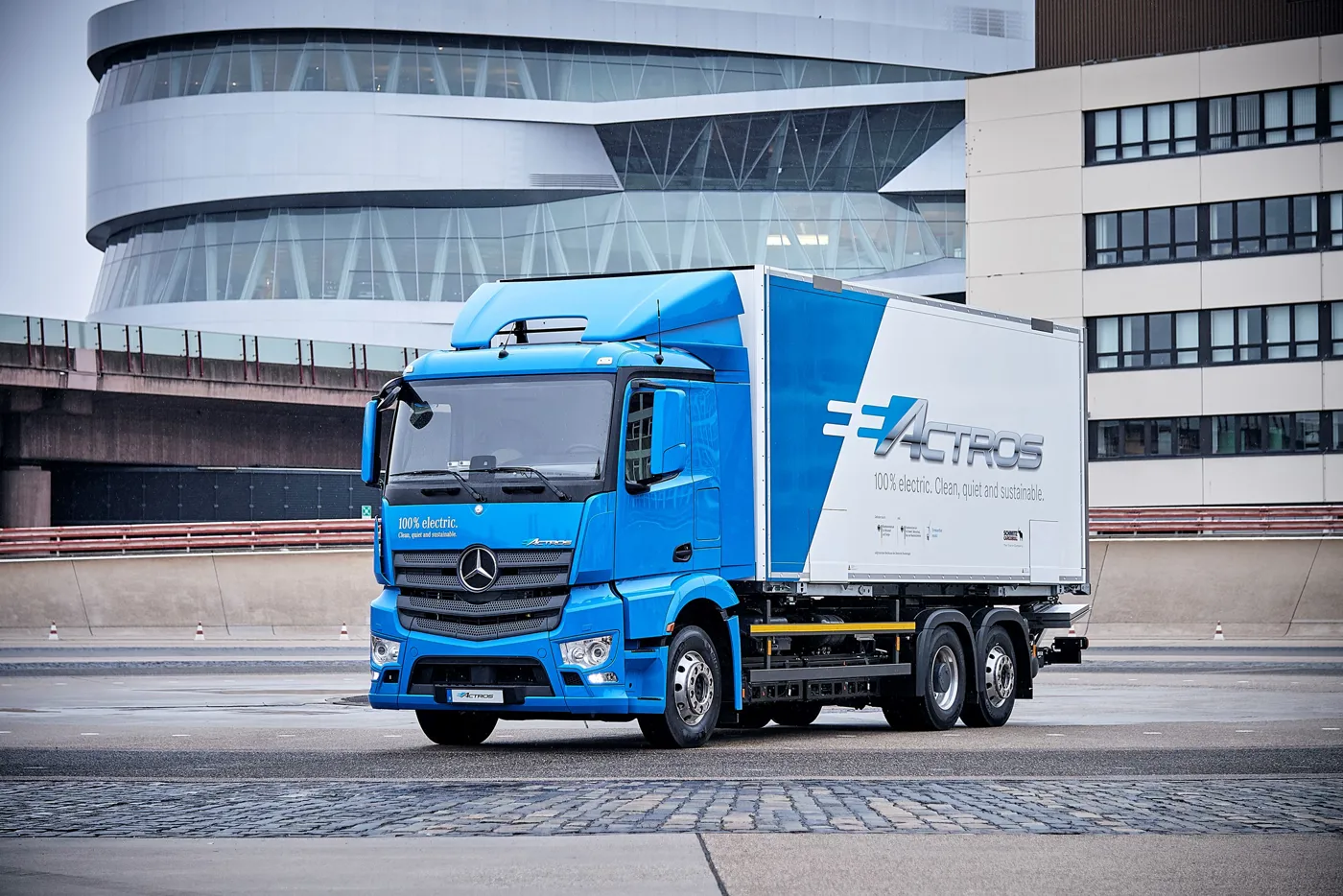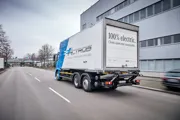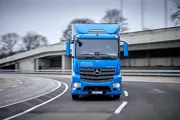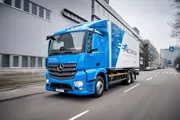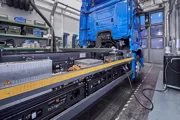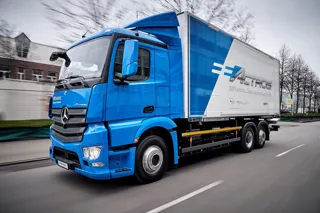Review
Much has been made of the apparent gallop towards the electrification of private cars. It’s difficult to pick up a newspaper or watch other media without some reference to it.
But, as always, trucks and vans rarely get a look in.
That doesn’t mean nothing is happening in the sector. Indeed, some of most exciting developments for alternative fuels and, particularly, electric trucks is taking place right now.
Many pundits appear to have written off the operational usefulness of heavy trucks within an urban environment, leaving the final mile delivery to light commercial vehicles. But this thought process is starting to be challenged.
Consider a rigid heavy goods vehicle at around 25 tonnes with rear steer for greater city manoeuvrability matched with the ability to deliver a payload equivalent to around 12/13 light commercial vehicles.
As such, it will reduce urban congestion so it has to be an exciting proposition for certain city deliveries.
This has obviously been in the mind of the research and development (R&D) team at Mercedes-Benz as, in 2016, it became the first manufacturer in the world with a heavy-duty electric truck.
Two years later, Mercedes is at the stage where customer trials are taking place involving 10 eActros vehicles in two variants with gross vehicle weights (gvws) of 18 or 25 tonnes.
At a recent press event we had the opportunity to take a three-axle variant on the road with one of Daimler’s development team.
Of course, the traditional driveline of a diesel-engined vehicle is different from its electric cousin and here the drive system comprises of two electric motors located close to the rear-axle wheel hubs.
These three-phase asynchronous motors are liquid-cooled and operate with a nominal voltage of 400 volts and generate an output of 125kW with maximum torque of 485Nm for each motor.
The gearing ratios convert this into 2 x 11,000Nm which Mercedes-Benz claims results in a driving specification equivalent to a diesel engine.
While the combined driveline specification is relatively unique to the eActros, Mercedes-Benz has endeavoured to use standard components already in service with other hybrid/electric projects within the automotive sector.
For instance, the drive axle is based on the ZF AVE 130 that has already been used as a low-floor portal axle in hybrid and fuel-cell buses although it’s been revised for the eActros.
The axle housing has been completely redesigned and is mounted in a higher position, increasing the ground clearance by more than 200mm. The maximum permissible axle-plated weight is at the usual European 11.5 tonnes.
The batteries are in 11 packs, three of which are in the frame area, the other eight are to be found underneath the chassis.
Discharged batteries can be fully recharged between three and 11 hours, assuming a realistic charging capacity of 20-80kW and the charging standard is the Combined Charging System.
The LV (low voltage) on-board network is made up of two conventional 12-volt batteries charged from the high-voltage batteries via a DC-DC converter.
This ensures all relevant vehicle functions such as lights, indicators, brakes, air suspension systems and cab systems remain operational in the event of the high-voltage network failing or being switched off. The high-voltage network can only be activated if both LV batteries are charged.
The Lithium-ion batteries have an output of 240kWh and are already in service within Daimler Group as the power behind a number of EvoBus projects. Therefore, according to Daimler, they can no longer be considered prototypes.
The basis for the eActros chassis is provided by the frame of a standard Actros but, after that, the similarities end as the rest of the chassis has been designed specifically for an electric drive system, with a high proportion of specific components.
For safety reasons, the battery packs are protected by steel housings and, in the event of a collision, the mountings give way and deform which diverts the energy past the batteries without damaging them.
The high-voltage batteries do not just supply energy to the drive system, but to the vehicle as a whole. Ancillary components such as the air compressor for the braking system, the power steering pump, the compressor for the cab air-conditioning system etc. are also all electrically powered.
Suspension remains in-line with the more conventional diesel truck and braking also remains the same, although of course, regenerative braking takes place under load and consequently returns energy to the batteries.
The cab remains the same as you would find on any Mercedes-Benz heavy truck with only the instrument panel changing to accommodate the required information concerning range (currently quoted as 200kms), battery condition and regeneration braking situation etc.
Climbing into the cab is no different to climbing inside any diesel variant but it all changes as you sit down and look at the instrument panel.
In front is the standard-looking panel, but in the middle is a LCD screen headed batterie (this can be scrolled through for various features). It has two icons one for the battery percentage (in my case 68%) and the other for the voltage (27.9v).
Also, the large right hand dial (the left is speed) instead of showing engine revs, has a needle that defaults to 12 o’clock and goes to the right if energy is used and to the left when energy is been returned via the braking system, for instance, when the standard retarder stalk is used to slow the vehicle.
Selecting D for drive elicits little more than a low hum and a couple of clicks as the batteries start up and set the vehicle off silently. This is a big vehicle and it’s the first time I have been in an all-electric truck of this size. I have to say I am impressed.
The vehicle responds like any other Actros except that the acceleration is fast, instant and controlled. The wind going past the mirrors is the only noise to be heard and with the latest Actros this will go as well.
The truck doesn’t handle noticeably differently from the conventional diesel even though the packaging and weight distribution is different.
Verdict
It’s obvious the cab environment feels and sounds a lot better without any engine noise and this, coupled with good acceleration, makes it potentially a great combination for urban delivery.
Of course, price (currently not available) will probably be the ultimate decider but total life costs may make this a viable proposition in certain inner city operations.



